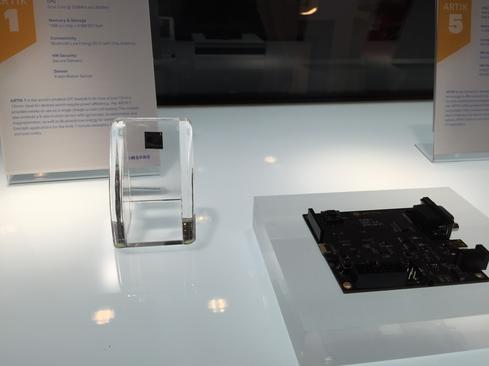The market for the Internet of Things is growing rapidly, and Verizon is stepping up its efforts on a multitude of fronts, the company announced.

IoT World: Separating Smart And Dumb Things
IoT World: Separating Smart And Dumb Things (Click image for larger view and slideshow.)
Communications giant Verizon announced its plans for simplifying Internet of Things (IoT) technologies, which have the potential connect everything from medical devices to refrigerators to the Web.
The company introducing three end-to-end smart cities solutions: intelligent video, intelligent lighting, and intelligent traffic management. It also launched ThingSpace.
The solutions are designed to help municipalities integrate disparate systems, monitor traffic and safety conditions in real-time, and manage their systems in a dynamic way in order to improve efficiency and public safety.
The IoT platform allows developers to create applications, customers to manage devices, partners to market their services, and Verizon itself to launch integrated vertical solutions in an open environment.
ThingSpace lets users manage their IoT environments and related data, end-to-end, from device to network to application.
Developers can also build IoT solutions using Verizon's extensive capabilities and innovation resources. All developers -- even if they are not Verizon customers -- code and test on the ThingSpace platform.
Verizon will also hold a developers conference in Boston in December, at which a wide range of coders, including academia, startups, businesses, and public-sector organizations will have access to an expanded set of application programming interfaces (APIs) and application-enablement capabilities on ThingSpace.
The worldwide IoT market is expected to grow from $655.8 billion in 2014 to $1.7 trillion in 2020, with a compound annual growth rate (CAGR) of 16.9%, according to a June report from IT research firm IDC.
Devices, connectivity, and IT services will make up the majority of the IoT market in 2020. They are estimated to account for more than two-thirds of the market in 2020, with devices like modules and sensors alone representing nearly a third of the total.
"Continued innovation in smart cities, connected cars and wearables demonstrates that IoT is the future for how we will live and work," Mike Lanman, senior vice president of enterprise products at Verizon, said in a statement. "Despite the exciting potential, IoT is still too complex, too fragmented, too expensive to connect and too hard to scale. Success in that future relies on a leader that can cut through the complexity and change the IoT model. That's where Verizon comes in."
The company also highlighted the ways it is putting its IoT capabilities to work for customers in the marketplace through ongoing collaborations with tech giants like Intel and Renesas, one of the world's largest suppliers of microcontrollers.
In addition, Verizon is working with partners to embed LTE chipsets in a range of connected machines to automate the provisioning process and make it faster to deploy IoT devices on its wide-area network.
[Major players are heating up the IoT world. Read: IBM Buys The Weather Company In Watson IoT Push.]
Additional enhancements planned in 2016 include enabling Power Save Mode for IoT devices to facilitate several years of battery life.
While IoT technology could have far-reaching impacts in a variety of markets and industries, worries persist that security is going to be a major issue.
According to an August survey sponsored by Nexusguard, a specialist in distributed denial-of-service (DDoS) security solutions, IoT devices could be exploited during software updates and used as proxy servers to target businesses that can then be extorted for payment.
About the Author(s)
You May Also Like








